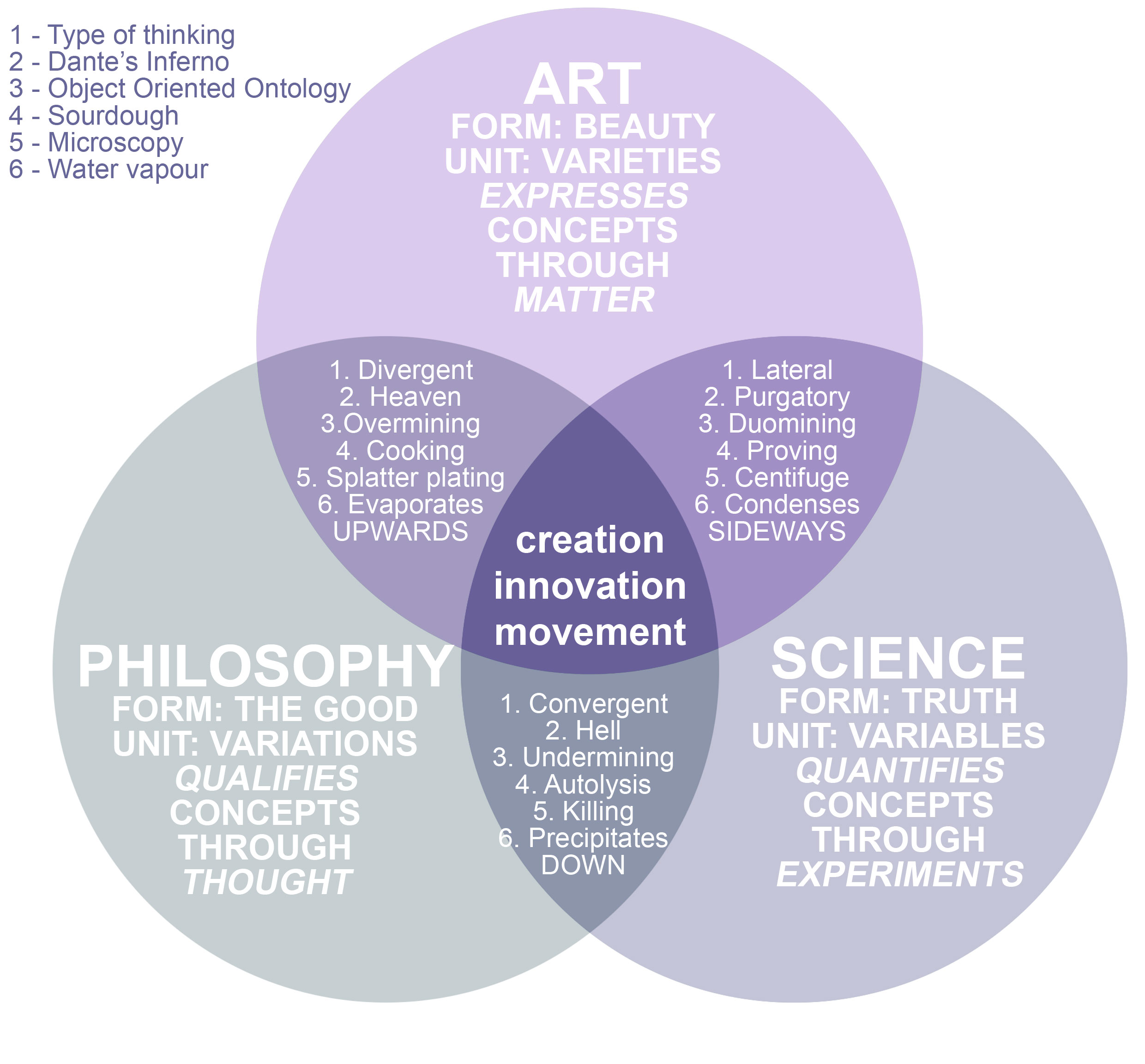What Drives Creativity: Understanding the Psychology Behind Innovative Thinking
Creativity is a complex and multifaceted phenomenon that has been studied extensively in various fields, including psychology, neuroscience, and education. At its core, creativity involves the ability to generate novel and valuable ideas, products, or solutions. But what drives this process? Research suggests that several psychological factors contribute to creative thinking, including curiosity, risk-taking, and divergent thinking.
Curiosity is a key driver of creativity, as it motivates individuals to explore new ideas, ask questions, and seek out novel experiences. When we are curious, we are more likely to engage in exploratory behavior, which can lead to the discovery of new concepts and connections. Risk-taking is another essential factor, as it allows individuals to experiment with new ideas and approaches, even if they may not work out. This willingness to take risks can lead to the development of innovative solutions that might not have been possible otherwise.
Divergent thinking is a cognitive process that involves generating a wide range of ideas or solutions to a problem. This type of thinking is essential for creativity, as it allows individuals to explore different possibilities and combinations of ideas. Research has shown that individuals who are skilled at divergent thinking are more likely to produce innovative solutions and products.
Fortunately, these psychological factors can be cultivated and developed over time. By engaging in activities that promote curiosity, risk-taking, and divergent thinking, individuals can enhance their creative potential. For example, practicing brainstorming, mind mapping, or SCAMPER (Substitute, Combine, Adapt, Modify, Put to Another Use, Eliminate, and Rearrange) can help individuals generate novel ideas and solutions. Additionally, seeking out new experiences, learning from failures, and embracing uncertainty can also foster creative growth.
By understanding the psychological factors that drive creativity, individuals can take steps to enhance their innovative thinking and develop new ideas and solutions. This, in turn, can lead to the creation of innovative products, services, and experiences that can transform industries and improve lives. As we explore the world of creative and innovative topics, it is essential to recognize the critical role that psychology plays in driving this process.
How to Think Outside the Box: Strategies for Generating Novel Solutions
Thinking outside the box is a crucial aspect of creative and innovative thinking. It involves generating novel solutions to complex problems by exploring unconventional ideas and approaches. One effective strategy for stimulating creative thinking is brainstorming. This involves gathering a group of individuals with diverse backgrounds and expertise to generate a wide range of ideas and solutions to a problem. By encouraging wild and ambitious ideas, brainstorming can help to overcome the constraints of conventional thinking and identify innovative solutions.
Mind mapping is another powerful tool for generating novel solutions. This involves creating a visual map of ideas and concepts, using words, images, and colors to represent different ideas and relationships. Mind mapping can help to identify patterns and connections between seemingly unrelated ideas, and can facilitate the generation of new and innovative solutions.
SCAMPER (Substitute, Combine, Adapt, Modify, Put to Another Use, Eliminate, and Rearrange) is a creative thinking technique that involves applying different perspectives and approaches to existing ideas and solutions. By substituting, combining, adapting, modifying, or rearranging existing ideas, individuals can generate novel solutions that build on existing knowledge and expertise.
Examples of successful innovations that resulted from these strategies include the development of the Post-it Note, which was invented by 3M scientist Dr. Spencer Silver using a combination of brainstorming and SCAMPER techniques. Another example is the creation of the iPhone, which was developed by Apple using a combination of mind mapping and brainstorming techniques.
These strategies can be applied in a variety of contexts, from personal projects to professional settings. By incorporating brainstorming, mind mapping, and SCAMPER into their creative toolkit, individuals can enhance their ability to think outside the box and generate novel solutions to complex problems. This, in turn, can lead to the creation of innovative products, services, and experiences that can transform industries and improve lives.
By embracing these strategies, individuals can unlock their full potential for creative and innovative thinking, and develop the skills and expertise needed to succeed in an increasingly complex and rapidly changing world. As we explore the world of creative and innovative topics, it is essential to recognize the importance of thinking outside the box and generating novel solutions to complex problems.
The Art of Combining Unrelated Concepts: The Power of Interdisciplinary Thinking
Interdisciplinary thinking involves combining concepts from different fields to create innovative solutions. This approach recognizes that complex problems often require a multifaceted approach, drawing on insights and expertise from various disciplines. By combining seemingly unrelated concepts, individuals can create novel solutions that might not have been possible within a single discipline.
One example of successful interdisciplinary collaboration is the fusion of art and science. Artists and scientists have long been fascinated by the intersection of their disciplines, and have produced innovative works that challenge our understanding of the world. For instance, the artist Leonardo da Vinci was also a skilled engineer and anatomist, and his work in these fields informed his art and vice versa.
Another example is the combination of technology and humanities. The digital humanities, for instance, involves the application of digital tools and methods to the study of humanities disciplines such as literature, history, and philosophy. This field has produced innovative research and scholarship that has transformed our understanding of these disciplines.
The benefits of interdisciplinary thinking are numerous. By combining concepts from different fields, individuals can gain a deeper understanding of complex problems and develop novel solutions. Interdisciplinary thinking also fosters creativity, as individuals are forced to think outside the boundaries of their own discipline and consider new perspectives and approaches.
Examples of successful interdisciplinary collaborations can be found in various industries, from technology to healthcare to sustainability. For instance, the development of prosthetic limbs has involved the collaboration of engineers, biologists, and medical professionals to create innovative solutions that improve the lives of individuals with disabilities.
By embracing interdisciplinary thinking, individuals can unlock their full potential for creative and innovative thinking. This approach recognizes that complex problems require a multifaceted approach, and that the combination of seemingly unrelated concepts can lead to novel solutions. As we explore the world of creative and innovative topics, it is essential to recognize the power of interdisciplinary thinking and its potential to transform industries and improve lives.
By combining concepts from different fields, individuals can create innovative solutions that might not have been possible within a single discipline. This approach fosters creativity, promotes collaboration, and leads to novel solutions that can transform industries and improve lives. As we continue to explore the world of creative and innovative topics, it is essential to recognize the importance of interdisciplinary thinking and its potential to unlock our full potential.
Embracing Failure as a Catalyst for Creativity: Learning from Mistakes
Failure is an inevitable part of the creative process. Even the most successful innovators and creatives have experienced failure at some point in their careers. However, it’s how we respond to failure that matters. By embracing failure as a catalyst for creativity, we can learn from our mistakes and use them as stepping stones for success.
Thomas Edison, the inventor of the light bulb, is famously quoted as saying, “I have not failed. I’ve just found 10,000 ways that won’t work.” Edison’s approach to failure is a testament to the importance of perseverance and learning from mistakes. By viewing failure as an opportunity for growth and learning, we can overcome the fear of failure and unlock our full creative potential.
Another example of a famous innovator who learned from failure is Steve Jobs, co-founder of Apple. Jobs was fired from Apple in 1985, but he used this experience as an opportunity to learn and grow. He went on to found NeXT, a company that developed innovative hardware and software technologies. Jobs’ experience at NeXT ultimately led to his return to Apple, where he played a key role in the development of the iPod, iPhone, and iPad.
Embracing failure as a catalyst for creativity requires a mindset shift. Rather than viewing failure as a negative outcome, we need to see it as an opportunity for growth and learning. By analyzing our mistakes and using them as a starting point for new ideas, we can create innovative solutions that might not have been possible otherwise.
So, how can we apply this mindset to our own creative pursuits? One approach is to view failure as a natural part of the creative process. Rather than getting discouraged by setbacks, we can use them as an opportunity to learn and grow. By embracing failure and using it as a catalyst for creativity, we can unlock our full potential and achieve success in our personal and professional lives.
By learning from our mistakes and using them as stepping stones for success, we can create innovative solutions that transform industries and improve lives. As we explore the world of creative and innovative topics, it’s essential to recognize the importance of embracing failure and using it as a catalyst for creativity.
Cultivating a Culture of Innovation: How to Foster Creative Environments
Cultivating a culture of innovation is essential for fostering creative thinking and driving success in personal and professional settings. A culture of innovation is characterized by a set of values, norms, and practices that encourage experimentation, risk-taking, and continuous learning. By creating such an environment, individuals and organizations can unlock their full potential for creative and innovative thinking.
One of the key characteristics of a culture of innovation is autonomy. When individuals are given the freedom to make choices and take ownership of their work, they are more likely to think creatively and develop innovative solutions. Autonomy also fosters a sense of accountability and motivation, as individuals are more invested in the success of their projects.
Diversity is another essential component of a culture of innovation. When individuals from different backgrounds and disciplines come together, they bring unique perspectives and ideas to the table. This diversity of thought and experience can lead to the development of innovative solutions that might not have been possible otherwise.
Psychological safety is also critical for fostering creative thinking. When individuals feel safe to share their ideas and take risks without fear of judgment or rejection, they are more likely to think creatively and develop innovative solutions. Psychological safety also fosters a sense of trust and collaboration, as individuals feel more comfortable sharing their ideas and working together to develop new solutions.
So, how can we create a culture of innovation in our personal and professional lives? One approach is to establish a set of values and norms that encourage experimentation, risk-taking, and continuous learning. This can include providing autonomy and ownership to individuals, fostering diversity and inclusion, and creating a psychologically safe environment.
Another approach is to provide opportunities for training and development, such as workshops, conferences, and online courses. This can help individuals develop the skills and knowledge they need to think creatively and develop innovative solutions.
By cultivating a culture of innovation, we can unlock our full potential for creative and innovative thinking. This can lead to the development of innovative solutions that transform industries and improve lives. As we explore the world of creative and innovative topics, it’s essential to recognize the importance of creating a culture of innovation and to take steps to foster such an environment in our personal and professional lives.
Real-World Examples of Innovative Topics: Success Stories from Various Industries
Innovative thinking is not limited to a single industry or field. It can be applied to various sectors, including technology, healthcare, sustainability, and more. In this section, we will explore real-world examples of innovative topics from different industries and highlight the creative solutions and their impact on the respective fields.
One example of innovative thinking in the technology industry is the development of virtual reality (VR) and augmented reality (AR) solutions. Companies like Oculus and HTC have created immersive experiences that are changing the way we interact with technology. For instance, VR is being used in the healthcare industry to treat patients with anxiety disorders, while AR is being used in the education sector to create interactive learning experiences.
In the healthcare industry, innovative thinking has led to the development of personalized medicine. Companies like 23andMe and Illumina are using genomics and artificial intelligence to create tailored treatment plans for patients. This approach has shown promising results in treating complex diseases like cancer and genetic disorders.
Sustainability is another area where innovative thinking is making a significant impact. Companies like Tesla and Vestas are leading the charge in renewable energy, developing innovative solutions like solar panels and wind turbines. These solutions are not only reducing our reliance on fossil fuels but also creating new job opportunities and driving economic growth.
These examples demonstrate the power of innovative thinking in driving success in various industries. By embracing creative and innovative thinking, companies can stay ahead of the curve, drive growth, and create new opportunities. As we explore the world of creative and innovative topics, it’s essential to recognize the impact of innovative thinking on different industries and to apply these principles to our personal and professional lives.
By studying these success stories, we can gain valuable insights into the creative solutions and strategies that have driven innovation in various industries. We can also learn from the challenges and obstacles that these companies have faced and how they overcame them. By applying these lessons to our own lives, we can unlock our full potential for creative and innovative thinking and achieve success in our personal and professional endeavors.
Overcoming Creative Blocks: Strategies for Staying Inspired and Motivated
Creative blocks are a common phenomenon that can strike even the most experienced and skilled creatives. When faced with a creative block, it’s essential to have strategies in place to overcome it and stay inspired and motivated. In this section, we will explore some effective strategies for overcoming creative blocks and provide tips on how to stay inspired and motivated.
One of the most effective strategies for overcoming creative blocks is to take a break and step away from the project. Sometimes, taking a break can help you clear your mind and come back to the project with a fresh perspective. Another strategy is to change your environment and work in a different location. This can help stimulate your creativity and get your ideas flowing again.
Another effective strategy is to seek out inspiration from other sources. This can include reading books, watching movies, or talking to people from different backgrounds and industries. By exposing yourself to new ideas and perspectives, you can stimulate your creativity and come up with innovative solutions.
Managing self-doubt is also crucial when overcoming creative blocks. Self-doubt can be a major obstacle to creativity, and it’s essential to have strategies in place to manage it. One effective strategy is to focus on the process rather than the outcome. By focusing on the process, you can break down the project into smaller, manageable tasks and make progress without getting overwhelmed by self-doubt.
Maintaining motivation is also essential when overcoming creative blocks. One effective strategy is to set small, achievable goals and reward yourself when you achieve them. This can help you stay motivated and focused on the project, even when faced with creative blocks.
By incorporating these strategies into your creative workflow, you can overcome creative blocks and stay inspired and motivated. Remember, creative blocks are a normal part of the creative process, and with the right strategies in place, you can overcome them and achieve your creative goals.
As we explore the world of creative and innovative topics, it’s essential to recognize the importance of overcoming creative blocks and staying inspired and motivated. By incorporating these strategies into your creative workflow, you can unlock your full potential for creative and innovative thinking and achieve success in your personal and professional endeavors.
Conclusion: Unlocking the Full Potential of Creative and Innovative Thinking
In conclusion, creative and innovative thinking are essential skills for success in personal and professional life. By understanding the psychological factors that drive creativity, cultivating a culture of innovation, and embracing failure as a catalyst for creativity, individuals can unlock their full potential for creative and innovative thinking.
Throughout this article, we have explored the importance of creative and innovative thinking, and provided actionable tips and techniques for stimulating creative thinking. We have also showcased real-world examples of innovative topics from various industries, and highlighted the creative solutions and their impact on the respective fields.
As we have seen, creative and innovative thinking are not limited to a single industry or field. They can be applied to various sectors, including technology, healthcare, sustainability, and more. By embracing creative and innovative thinking, individuals can stay ahead of the curve, drive growth, and create new opportunities.
So, what can you do to unlock your full potential for creative and innovative thinking? Start by cultivating a culture of innovation in your personal and professional life. Encourage experimentation, risk-taking, and continuous learning. Seek out inspiration from other sources, and stay open to new ideas and perspectives.
Remember, creative and innovative thinking are skills that can be developed over time with practice and patience. By applying the strategies and techniques discussed in this article, you can unlock your full potential for creative and innovative thinking and achieve success in your personal and professional endeavors.
In the world of creative and innovative topics, the possibilities are endless. By embracing creative and innovative thinking, you can unlock new opportunities, drive growth, and create a better future for yourself and others. So, don’t be afraid to think outside the box, challenge conventional wisdom, and push the boundaries of what is possible.







